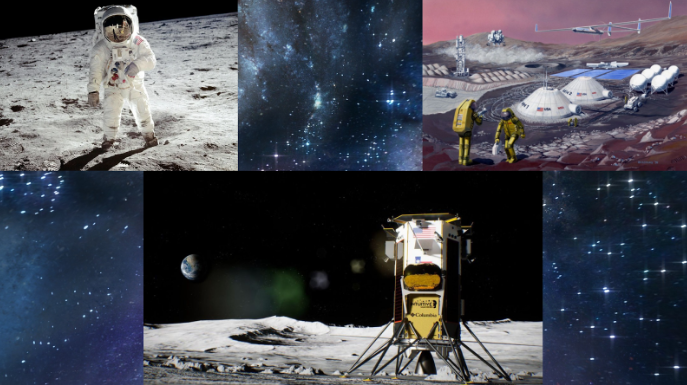On Feb. 22, the uncrewed Odysseus spacecraft, developed by Intuitive Machines, NASA, and SpaceX, successfully landed on the moon, marking the first time the U.S. touched the lunar surface since the Apollo mission ended in 1972.
Developed by NASA and Houston-based aerospace company Intuitive Machines, the spacecraft is famously the first US-made vehicle to make a soft touchdown landing on the moon in five decades. It was also the first lunar landing by a commercially manufactured and operated space vehicle, and the first under NASA’s Artemis program, which aims to return astronauts to Earth’s satellite this decade. Upon making contact with the lunar surface, however, the spacecraft toppled over in an eroded crater near the largely unexplored south pole, disrupting communications. The next day, Intuitive Machines released a statement claiming that human error was to blame for the navigational issue.
Astronomy Club sponsor Bonnie Weiberg shares her perspective on the outcome of the mission, which can be considered successful in spite of its technical failures.
“I think that it was a successful mission because [the Odysseus spacecraft] landed on the moon,” Weiberg said. “Even though it was very short and had numerous technical issues, parts of it could be considered a success. The people who sponsored the spacecraft may not think that it was successful, however.”
According to Intuitive executives, engineers believe Odysseus caught the foot of one of its landing legs as it neared touchdown and tipped over before coming to rest horizontally, allegedly propped up on a rock. Before takeoff, flight readiness teams had neglected to manually unlock a safety switch before launch, preventing activation of the vehicle’s laser-guided rangefinders and forcing flight engineers to find an alternative solution during orbit. Likewise, two of the spacecraft’s communication antennae were knocked out of commission and its solar panels were facing the wrong direction, limiting the vehicle’s ability to recharge its batteries.
The final word on Odysseus’ fate will come from Intuitive Machines, whom NASA paid a staggering $118 million to build the robot lander and fly it to the lunar surface. While the spacecraft continues to operate, flight controllers intend to download additional data and configure the lander to “phone home” if and when it receives enough solar power amid frigid lunar temperatures, which are capable of cracking the electronics and killing the batteries. According to Intuitive Machines spokesperson Josh Marshall, instead of putting Odysseus to sleep once solar power regeneration is lost, operators have now decided to leave the spacecraft running until its batteries are drained, allowing the lander to go dark on its own.
To date, space agencies of just four other countries around the world have achieved a “soft” (uncrewed) moon landing – the former Soviet Union, China, India, and Japan, whose spacecraft also tipped over on its side after being launched in January. That being said, the United States is the only country to have sent humans to the moon.
…I also think that NASA considered the moon to be checked off of the list of “things to do” in the 70s. The technological issues may cause difficulties in the future to secure funding. I think that humans will return to the moon one day. Possibly to build a base for future travel to Mars.”
— Astronomy Club sponsor Bonnie Weiberg
Weiberg explains some of the leading factors that have hindered the nation’s efforts to return to the lunar surface since the days of the Apollo program.
“I think that the United States hasn’t gone back to the moon because there has been so much interest in the International Space Station and sending humans to Mars one day,” Weiberg said. “I also think that NASA considered the moon to be checked off of the list of “things to do” in the 70s. The technological issues may cause difficulties in the future to secure funding. I think that humans will return to the moon one day. Possibly to build a base for future travel to Mars.”
Looking forward, NASA’s Artemis mission strives to take humans back to the Moon as soon as Nov. 2024 by sending four human beings on a 10-day lunar flight, which is set to include the first woman and the first Black person in history to reach outer space. According to the organization, its primary goal will be to “explore the Moon for scientific discovery, technology advancement, and to learn how to live and work on another world to prepare for human missions to Mars.” Despite Odysseus’ technological setback, its outcome has helped pave the way for a promising future of space exploration on the horizon.















